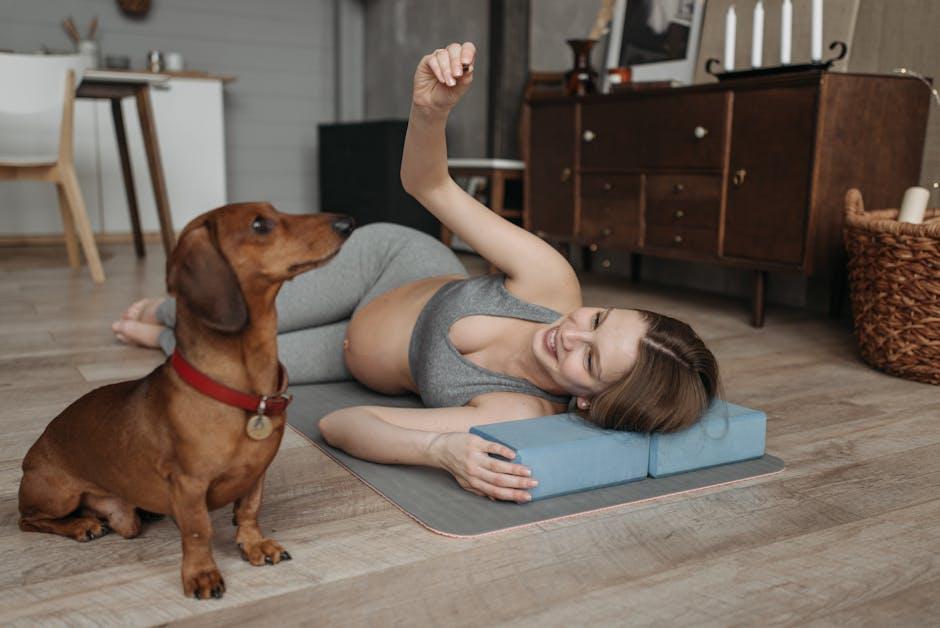Welcoming a dog into your life brings immense joy and companionship, but it also comes with the responsibility of ensuring their safety and well-being. One of the fundamental aspects of responsible pet ownership is understanding how to properly use dog collars and leashes. These tools are not just about control and training; they are essential for your dog’s safety during walks and outings. In this guide, we’ll explore the best practices for using collars and leashes safely, ensuring that every adventure with your furry friend is both enjoyable and secure. Whether you’re a new dog owner or have years of experience, these tips will help you foster a safe and trusting bond with your canine companion.
Choosing the Right Collar and Leash for Your Furry Friend
Finding the perfect collar and leash for your dog is not just about style—it’s about ensuring their safety and comfort during walks and adventures. When selecting a collar, consider the following:
- Material: Opt for durable materials like nylon or leather, which can withstand daily wear and tear.
- Size: Ensure the collar fits snugly but comfortably; you should be able to slip two fingers between the collar and your dog’s neck.
- Type: Choose between flat collars, martingale collars, or harnesses based on your dog’s training needs and behavior.
When it comes to leashes, keep these tips in mind:
- Length: A standard 6-foot leash is versatile for most situations, providing enough room for exploration while maintaining control.
- Material: Like collars, nylon or leather are excellent choices for leashes, offering a balance of strength and comfort.
- Features: Consider leashes with reflective strips for night walks or padded handles for added comfort.

Ensuring a Comfortable Fit: Tips for Collar and Leash Safety
When selecting a collar for your furry friend, it’s crucial to focus on both safety and comfort. Begin by measuring your dog’s neck to ensure the collar fits snugly but not too tight—ideally, you should be able to slip two fingers between the collar and your dog’s neck. Opt for materials that are soft yet durable, such as nylon or leather, and check for any rough edges that might irritate your pet’s skin. Remember, a well-fitted collar is essential not just for comfort but also for effective leash training and everyday control.
- Check regularly: Dogs can grow quickly, and their collars may need adjustments. Inspect the fit every few weeks.
- Watch for wear and tear: Regularly examine the collar for signs of damage or fraying, and replace it if needed.
- Use the right leash: Pair the collar with a leash that matches your dog’s size and strength. A leash that’s too long or too short can lead to accidents.
To prevent any accidents, always ensure the leash is securely attached to the collar before heading out. In high-traffic areas or crowded spaces, consider using a harness for added security. Remember, your dog’s safety and comfort are paramount, and a little extra attention to these details can make all the difference.

Training Techniques to Foster Positive Walking Experiences
Creating a joyful walking experience for both you and your dog begins with the right training techniques. Start by ensuring your dog is comfortable and familiar with the collar and leash. Positive reinforcement is key; reward your dog with treats and praise for calm behavior when putting on the collar and leash. This sets a positive association and makes the equipment something they look forward to.
- Short sessions: Begin with brief walks to prevent overwhelming your dog, gradually increasing the duration as they become more confident.
- Consistent commands: Use simple, consistent commands such as “heel” or “walk” to guide your dog and maintain control.
- Frequent stops: Allow your dog to pause and explore occasionally, fostering curiosity and reducing anxiety.
Maintain a calm demeanor throughout your walks, as dogs are sensitive to their handler’s emotions. A relaxed posture and gentle voice will help your dog feel secure. Remember, patience is vital; every dog learns at their own pace. Celebrate small victories and continue to nurture a positive walking experience.
Addressing Common Concerns and Avoiding Potential Hazards
When selecting the right collar and leash for your furry friend, it’s essential to address common concerns to ensure their safety and comfort. Choose the right size: A collar that is too tight can cause discomfort, while one that is too loose may slip off. Ensure you can fit two fingers between the collar and your dog’s neck. Consider the material: Opt for materials that are gentle on your dog’s skin, such as soft nylon or leather. Avoid collars with sharp edges or excessive hardware that might irritate or injure your pet.
To avoid potential hazards during walks, follow these simple guidelines:
- Inspect regularly: Check collars and leashes for wear and tear. Replace them if they show signs of fraying or damage.
- Use the right leash length: Shorter leashes offer better control in crowded areas, while longer ones provide more freedom in open spaces.
- Avoid distractions: Keep your focus on your dog during walks to prevent them from getting tangled or pulling unexpectedly.
- Be mindful of surroundings: Stay aware of potential dangers such as traffic, other animals, or environmental hazards.

